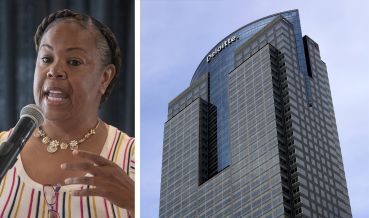There Are Great Opportunities in Manhattan’s Shaky Investment Sales Market
By Robert Knakal October 18, 2022 12:46 pm
reprints
Inflation, interest rate increases, a more challenging lending environment, cash-in refinancings, new regulations, the direction of rents in different sectors — the list of concerns among market participants in the New York City investment sales market goes on and on, and could easily include 20 more issues that are of significant concern today.
We are heading into a time of uncertainty, disruption and, counterintuitively, tremendous opportunity. Fortunes will be made over the next few years.
At the end of each quarter, this column has reviewed the performance of the investment sales market, and this quarter will be no different. This week, we will look at the performance of investment sales in the Manhattan submarket for transactions in excess of $10 million south of 96th Street on the East Side and south of 110th Street on the West Side.
Given the feel of, and vibe in, today’s market, it is surprising to see how robust the performance was in the third quarter. However, it is important to remember that transactions that closed in July, August and September were negotiated, and had contracts signed, many months before their closings, which impacted the data.

In the third quarter, there was $6.1 billion of investment sales activity. This put the market on pace for $32.6 billion if we annualize the first three quarters of the year, which would be up 107 percent from the $15.7 billion total in 2021. This pace would also be 192 percent above 2020’s $11.1 billion, a cyclical low. While these numbers are up significantly from the last two years, this pace would still lead to an annual total 43 percent below the market’s cyclical peak of $57.5 billion in 2015.
Regarding the number of properties sold, there were 73 transactions in the third quarter in Manhattan. If we annualize the first three quarters of the year, the market is on pace for 215 sales for the year, which would be up 12 percent from the 191 sales in 2021. This pace is trending 56 percent below the market peak of 484 sales in 2015.
So the dollar volume of sales is on pace to be up 107 percent, and the number of properties sold is on pace to be up 12 percent. These are very encouraging metrics but the question is: Will these trends continue?
The level of inflation has been running at a 40-year high, which, at 8.2 percent, has the Fed concerned, and its policy regarding interest rates has been clear for some time now. The Fed’s comfort level of inflation is between 1 percent and 2 percent annually, and we are currently well above this comfort zone. The Fed has raised rates several times already and, as of the time of this writing, the prime rate is 6.25 percent; the one-month secured overnight financing rate is 3.3 percent; and the 10-year Treasury is 3.94 percent. These numbers are all elevated from a year ago.
Last week, the president of the Kansas City Fed stated that, “The increases we have implemented thus far have not had their desired effect.” That statement and the recent inflation number lead economists to believe additional rate increases are on the horizon. At a recent real estate networking event I attended, the question was asked, will the 10-year Treasury be higher or lower than 5 percent by the end of the year? The majority of respondents felt it would be higher.
These continued increases will exert downward pressure on value and transaction volume. However, the reality that cash-in refinancings will be necessary may bring a wave of product to the market as owners decide whether to pump additional capital into their assets to effectuate the refinancing.
Some market participants feel that we are heading into a period where values will continue to fall and stresses will be felt across all sectors. If this happens, we should take lessons from the past and particularly look at the financial crisis of 2008 and 2009, and the savings and loan crisis in 1990 and 1991. During these periods of uncertainty and disruption, investors with courage (and capital) made some of the most profitable investments of their careers. The same thing is likely to happen this time around as pricing levels per square foot are hitting levels not seen in many, many years.
There remains a tremendous amount of capital out there. The question is, will the courage be there too?
Robert Knakal is chairman of New York investment sales at JLL (JLL).


